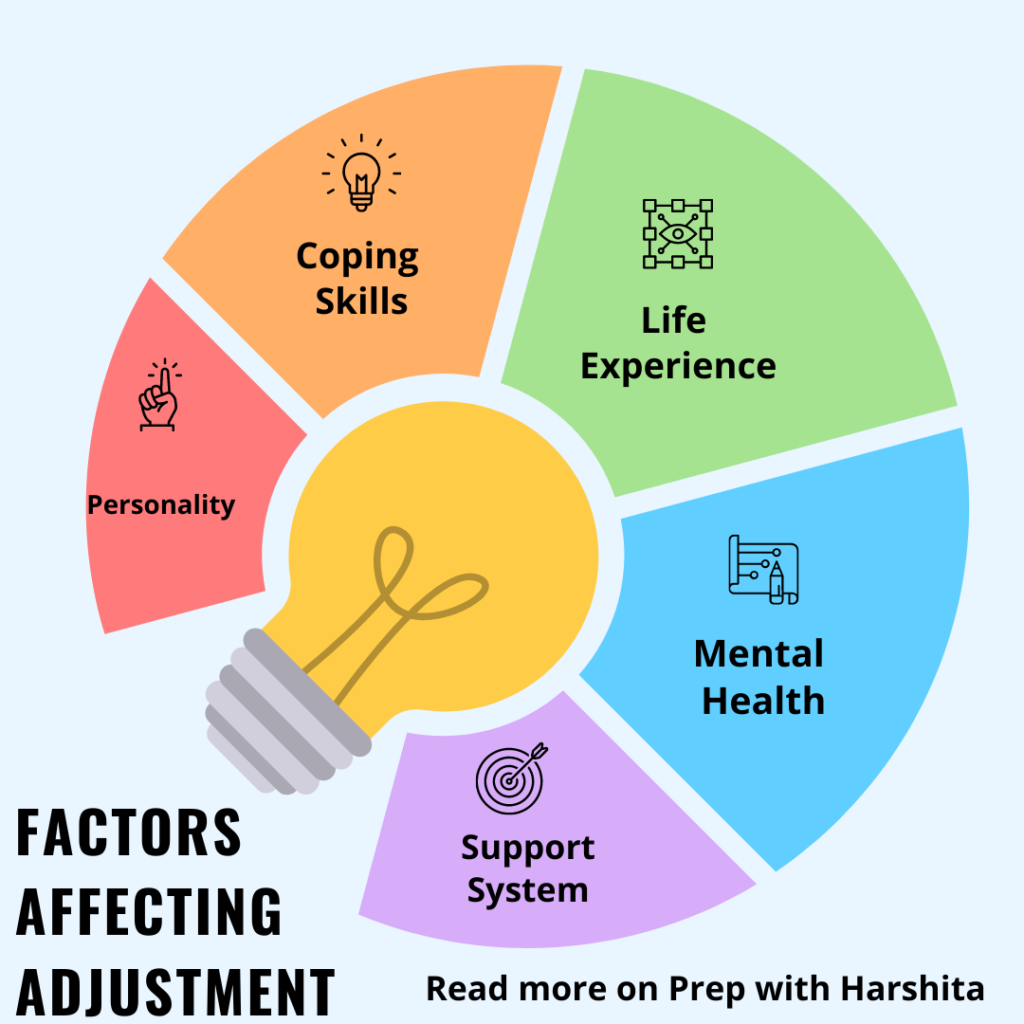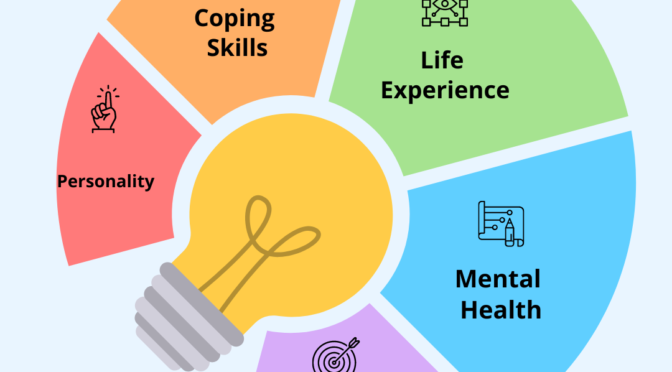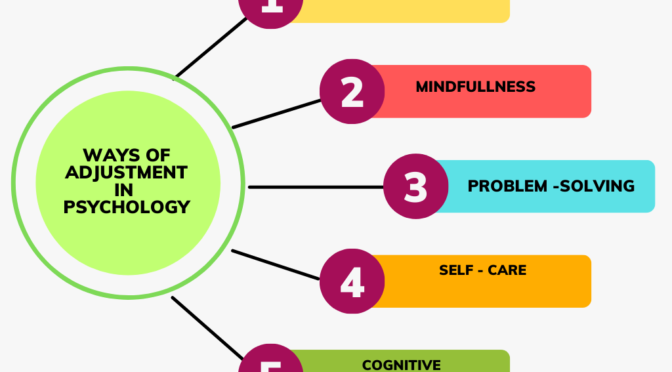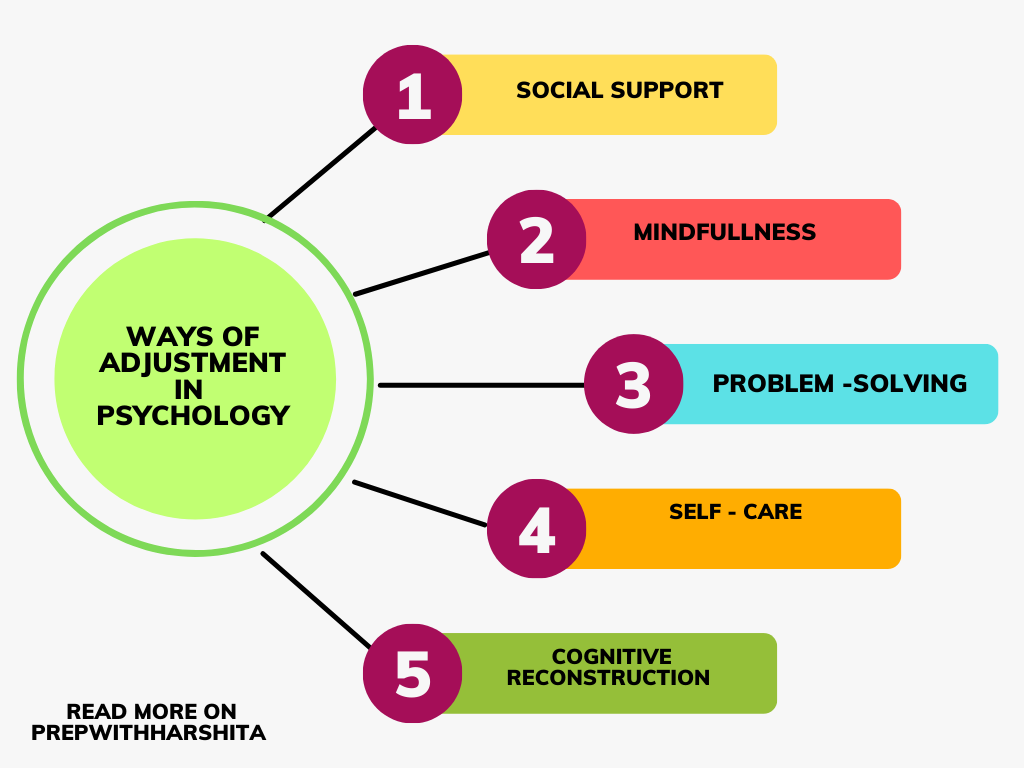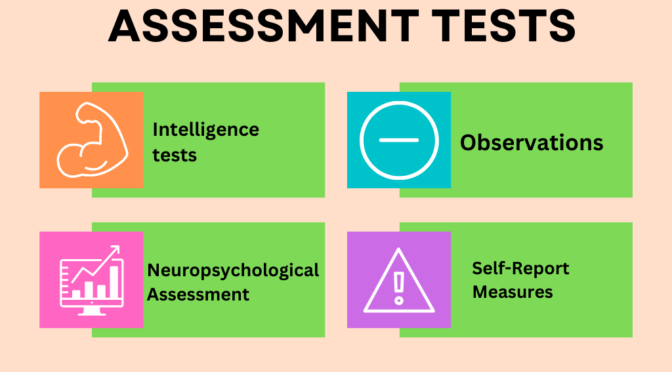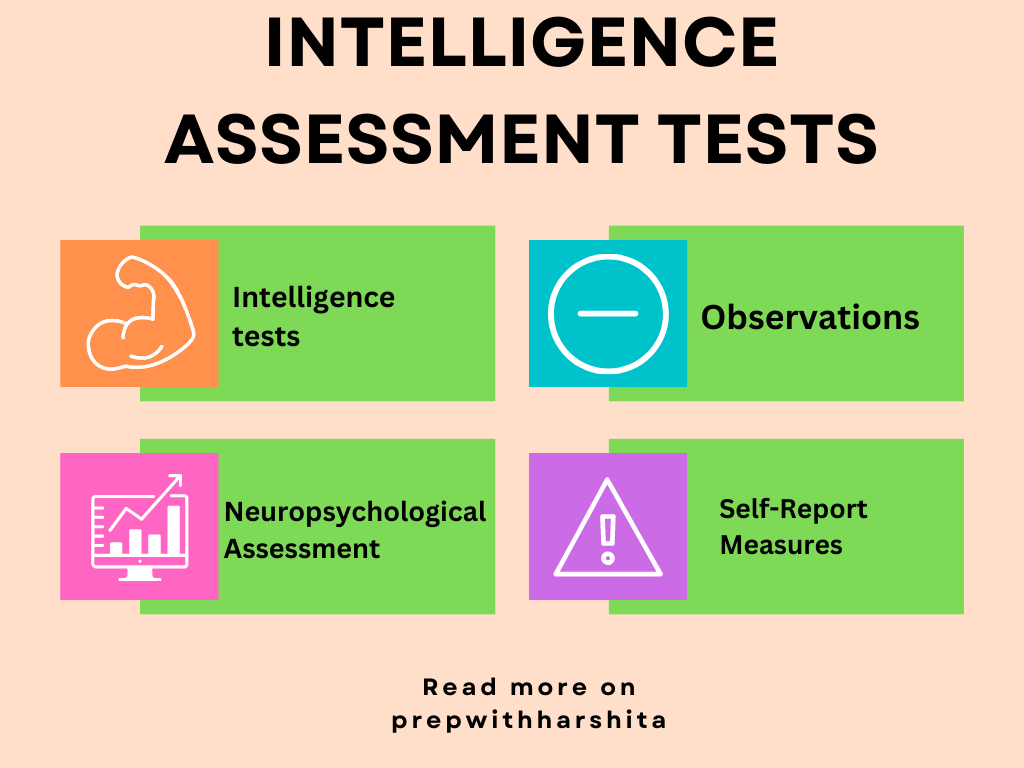The adjustment refers to the ability to adapt to new situations or changes in one’s environment. There are several factors that can affect a person’s adjustment, including:
- Personality: Some individuals may have a more flexible and adaptable personality, which allows them to adjust more easily to new situations, while others may have a more rigid personality, which may make it more difficult for them to adapt.
- Support system: Having a strong support system, such as family, friends, or a community, can provide a sense of security and help individuals cope with stress and change.
- Life experiences: Previous life experiences, such as traumatic events or significant life changes, can impact a person’s ability to adjust to new situations.
- Cultural background: Cultural values, beliefs, and practices can influence how individuals approach to change and adjust to new situations.
- Mental health: Individuals with mental health issues, such as anxiety or depression, may find it more challenging to adjust to new situations.
- Coping skills: The ability to cope with stress and change can greatly impact a person’s adjustment. Effective coping skills include problem-solving, positive thinking, and seeking support from others.
- Resources: Access to resources, such as education, healthcare, and financial stability, can also impact a person’s ability to adjust to new situations.
Overall, adjustment is a complex process influenced by various internal and external factors. Developing effective coping skills and having a strong support system can help individuals adapt and adjust to new situations more effectively.
Also Read: What is Adjustment?
